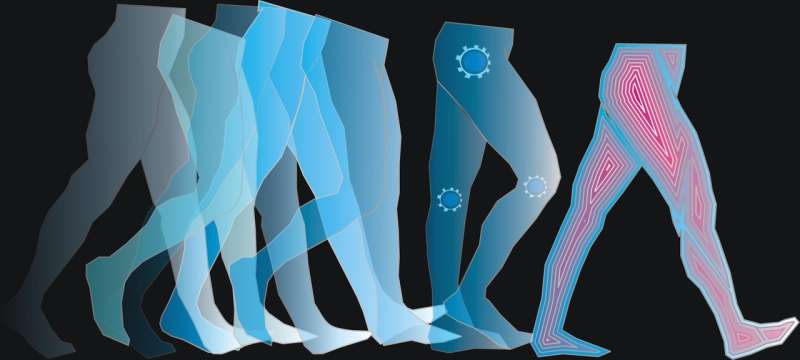The locomotion of hominins in the Pleistocene was just as efficient as that of current humans

In an article published recently in the American Journal of Physical Anthropology, researchers from the Paleophysiology and Ecology Group of the Centro Nacional de Investigación sobre la Evolución Humana (CENIEH) analyzed the influence of body proportions on the cost of locomotion by means of an experimental energetic study with 46 subjects of both sexes, whose results indicate that the walk of Pleistocene hominins was no less efficient energetically than that of current humans.
The energy cost of locomotion is a question that has been widely studied and debated within paleoanthropology because of its important implications. The researchers used the relationship between the width of the hip, the length of the femur and the body mass to model this cost in a large number of extinct hominins.
Traditionally, it was thought that the leaner skeletons of modern humans reflected biomechanical advantages which made locomotion a more efficient activity. The slimmer pelvis of our species entails greater difficulty for childbirth, but it reduces the force the abductor muscles of the hip have to exert to maintain the stability of the pelvis while walking.
Marco Vidal Cordasco, lead author of this article, says, "That doesn't imply that the hominins with wider pelvises expend more energy walking. In fact, the results obtained show that wider pelvises, at the height of the iliac crest, allow the energy cost of locomotion to be significantly lower."
Upward metabolic readjustment
Since 2 million years ago, with the appearance of the species Homo ergaster, the body mass and the brain size of the hominins have risen considerably. These changes have entailed an important readjustment at the metabolic level, with greater demand for energy to maintain these larger organs.
"However, our results show that the greater efficiency of locomotion was not a mechanism to compensate for this increase in size. That is to say, the changes observed in the width of the pelvis and the length of the lower limbs did not reduce the cost of walking sufficiently to offset the rise in energy cost caused by the increased body mass," adds Vidal.
More information: M. Vidal-Cordasco et al. Energetic cost of walking in fossil hominins, American Journal of Physical Anthropology (2017). DOI: 10.1002/ajpa.23301
Journal information: American Journal of Physical Anthropology
Provided by CENIEH




















